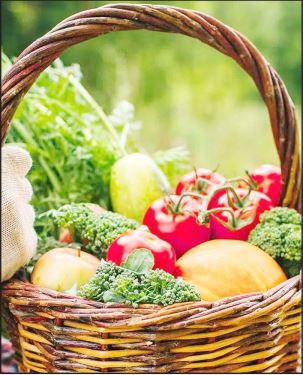Fresh Veggies Day on June 16 is celebrated to commemorate the nutritional value of fresh vegetables and their importance to human health. Fresh vegetables are the best sources of micronutrients that are vital for metabolism, growth, development, and disease prevention. The natural fiber content in vegetables helps prevent constipation, hemorrhoids, and colon cancer. According to “Food & Wine” magazine, there is no such thing as a bad vegetable. Some may need extra work to remove an outer shell or be peeled, and some fare better when cooked. However, there is no reason not to eat fresh vegetables every day. The first settlers of America’s heartland were mostly farmers from Great Britain and Scandinavia who brought farming techniques from their homelands to till the rich soil of the Midwest. Most American settlers lived near the Atlantic coast and shipped their produce east for consumption. But with the advent of railroads in the mid-1800s, farmers could ship food directly to Chicago, where it was processed into canned goods and transported back east by rail or boat. By 1852, the nationwide distribution of fruits and vegetableshad become a big deal. “The New York Times” referred to the California and Oregon trail as the great thoroughfare for transporting fresh fruit. In 1855, 59 million pounds of produce were sent from the West Coast by rail. In 1862, the Department of Agriculture was created to ensure that everyone had access to fresh veggies and improved nutrition in the U.S. So far, they have been successful. New organic and vegan products have hit the market in recent years, making vegetable consumption even more accessible for all people. In the spring of 1992, a group of farmers in rural North Dakota gathered to discuss the future of their farms and their families. They wanted to evolve from what we call conventional farming using agrochemicals and tilling their soil for weed control to a system that would use less chemical pollution and less fossil fuel. The farmers decided to stop using chemical pesticides, herbicides, fungicides, and fertilizers on one-quarter of their land. Instead,
they used complex crop rotations, cover crops, manure, and compost to provide fertility











More Stories
Kajol & Rani Mukherji get emotional during family Durga Puja celebrations
PM Modi meets Vice President CP Radhakrishnan in Delhi
21st Annual Convocation of KIIT-DU Begins Tomorrow